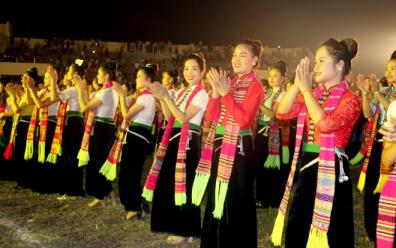The Unique Bamboo Dance of the Thai People in Muong Lo
- Tuesday, December 24, 2024
YBO - The bamboo dance, a cultural hallmark of the ethnic groups in Vietnam’s Northwest region, holds a special place in the traditions of the Thai people in Muong Lo, Nghia Lo (Yen Bai). Characterized by graceful movements, the resonant sound of bamboo poles clashing, and the harmonious blend of music and choreography, this dance serves not only as an art form but also as a bridge fostering community connection.

|
|
A bamboo dance performance by students in Nghia Lo Town.
|

Other news

There are no longer any "blank districts" in new rural development (NRD) — a remarkable achievement recently attained by Yen Bai Province, marking a significant milestone in the journey toward building prosperous and happy rural areas. The dramatic transformation of localities, particularly highland districts once faced with immense hardships, has affirmed the province’s correct direction and the spirit of unity and collective effort shared by the Party, government, and all ethnic communities in the province.

As the southern gateway district of Yen Bai Province, Yen Binh possesses significant potential for the development of agriculture and forestry. In particular, with more than 15,900 hectares of Thac Ba Lake surface area, the district enjoys a substantial advantage in high-value aquaculture and eco-tourism development.

Van Yen District has been actively implementing a range of practical measures to preserve and promote the traditional cultural values of ethnic minorities in the area. Among these efforts, the preservation of the distinctive cultural identity of the Phu La ethnic community—currently the smallest ethnic group in Yen Bai Province and residing in Chau Que Thuong Commune—has yielded encouraging results, as reflected in vibrant cultural activities and the heartfelt engagement of the community.

Thanks to continuous efforts in improving quality, diversifying product offerings, and promoting trade, Yen Bai’s key agricultural products have achieved remarkable results, making significant contributions to the province’s socio-economic development.










